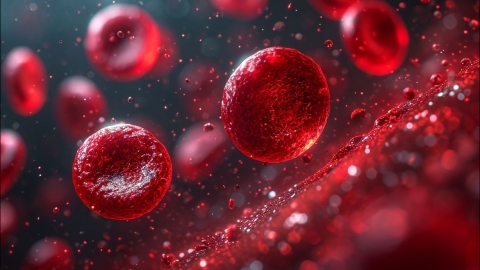What are the commonly used blood component products?
Under normal circumstances, commonly used blood component products mainly include whole blood, red cell suspension, platelet concentrate, fresh frozen plasma, and cryoprecipitated antihemophilic factor. Different blood components are suitable for different clinical scenarios and should be selected according to the patient's condition. A detailed analysis is as follows:
1. Whole Blood
Whole blood is unseparated blood collected directly from donors, containing all components including red cells, white cells, platelets, and plasma. It is primarily used for patients with acute massive blood loss, rapidly restoring blood volume, oxygen-carrying capacity, and coagulation function. However, strict blood type compatibility must be ensured during transfusion to prevent hemolytic reactions.

2. Red Cell Suspension
Red cell suspension is prepared by removing most of the plasma from whole blood and consists primarily of red blood cells. It is suitable for patients with anemia or chronic blood loss, effectively increasing red blood cell count and improving hypoxia symptoms. Due to its smaller infusion volume, it reduces circulatory load and lowers the risk of transfusion reactions.
3. Platelet Concentrate
Platelet concentrate is isolated and extracted from whole blood and is rich in platelets. It is mainly used for patients with reduced platelet counts or impaired platelet function, helping to prevent and treat bleeding. Close monitoring of platelet count changes during transfusion is essential to ensure effective hemostasis.
4. Fresh Frozen Plasma (FFP)
Fresh frozen plasma is plasma separated from whole blood and rapidly frozen for storage. It contains various coagulation factors, albumin, and immunoglobulins. It is indicated for patients with coagulation disorders or severe burns, helping to replenish clotting factors to prevent bleeding and restore plasma proteins to maintain colloid osmotic pressure.
5. Cryoprecipitated Antihemophilic Factor (Cryoprecipitate)
Cryoprecipitate is produced by cold precipitation of fresh frozen plasma and is rich in coagulation factor VIII, fibrinogen, and other components. It is primarily used for patients with hemophilia A or severe fibrinogen deficiency, rapidly elevating specific clotting factor levels to control bleeding. Dosage should be adjusted based on coagulation test results during administration.
In addition, before administering any blood component product, it is essential to carefully verify the patient’s information and blood type compatibility to prevent transfusion errors. During transfusion, closely monitor the patient for adverse reactions; if symptoms such as fever or rash occur, stop the transfusion immediately. Blood products must be stored and transported under specified temperature conditions to ensure safety and quality and to avoid waste.




